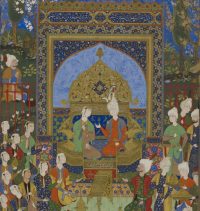Geller, Markham (ed.). 2014. Melammu: The ancient world in an age of globalization (Proceedings 7). Edition Open Access.
The present Melammu volume extends from Greece to India, with articles on Phrygia and Armenia, also viewing texts from ancient Israel, Egypt, and Mesopotamia. The globalization described in this volume extends over language barriers and literatures, showing how texts as well as goods can travel between societies and regions. This collection of papers offer new insights and perspectives into connections between the Mediterranean World, Mesopotamia, Anatolia, Persia and India.
The volume contains contributions by Panaino, Sadovski and Gariboldi.
